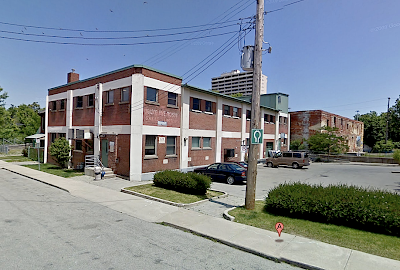Because it relates precisely my stance on the entire endeavour, I'm publishing it here, too.
Why Ward Boundary Reform Is So Important.
(And it's not for the reason you might think)
The idea of sorting out the disparities in Hamilton wards' populations has taken off. We have a petition being circulated. We have a Facebook group, 'Hamiltonians for Ward Boundary Reform'. We have Letters to The Editor being published in The Spec, Bill Kelly has featured Christopher Cutler from the aforementioned Facebook page on his show, and Raise the Hammer has begun its discussion.
It's all quite heartening.
Not so much because of the prospect of correcting some glaring 'Relative Population Parity' inequities, though these really need to be dealt with. But more because of the opportunity it affords the community to roll up its sleeves, get involved and help define this city according to its own vision.
Because this issue is about us.
For a change, there's no outside developer involved. There's no institution exerting pressure. There's no possibility of 'in camera-esque' backroom negotiations unfolding, and unlike say, with Area Rating and its public consultation, there isn't anything that Council can point to as being so critical as to have to shoo us out of the room so that the 'adults' can make a decision due to there being potentially dire consequences attached to it. I know, because I've been having correspondences with communities across Ontario who have gone through this process.
No, this issue...is ours.
Some may make the case that we're hardly in the middle of a fractious term at Council, that there have been no destiny-altering votes that have taken place because of imbalances in our ward representation, so it's hardly a desperate situation requiring attention. And they'd be right. So I don't think the reason ward boundary reform is so important is to prevent power struggles. Or even so much to right the representational wrong, though to me, it's indisputable that we have one.
I believe that it's important –I'm heartened– because over the next six-or-so months we could see genuine dialogue in Hamilton.
Authentic discourse.
Certified debate.
We can safely, without fear of there being too much at stake to risk getting it wrong (as with the Pan Am Games stadium site-selection, or the West Harbour/Barton-Tiffany/Setting Sail situation) set the agenda, explore what it means to invest in an element of our city's makeup, actually participate to whatever extent that we have the initiative and motivation and energies to do so. For once, we don't find ourselves in a dramatic scenario, in a precarious position of someone else's making, one where we risk 'snatching defeat from the jaws of victory'. Because though there may be time-constraints and procedural requirements attached to the process, what unfolds here is almost entirely up to us. We, the people.
For some time now, I've been harping on about increased resident engagement. And people have generally responded with a weary nihilism, that things are just too set in stone for the kind of change I'm championing to happen, that it's almost impossible to effect, that the longstanding roles played aren't easily re-written. I've had it suggested to me that the HWDSB headquarters project has been the best possible proof of this.
Maybe so. But that just makes me look at ward boundary reform with even more optimism. If for no other reason than it's such a rich opportunity to galvanize residents, to gather together and discuss something fundamental about our city, and actually impact things for a change. It's a chance to get experience at 'marshalling the troops', at gaining a better understanding of how the game must be played on our part in order for us to be viable players at the table.
To me, no matter what tangible result we get out of the endeavour to re-draw boundaries, no matter how much more equitable our wards end up being, the potential growth in our confidence, in how we see ourselves within our own local governance may just be the most valuable possible outcome.
M Adrian Brassington

































